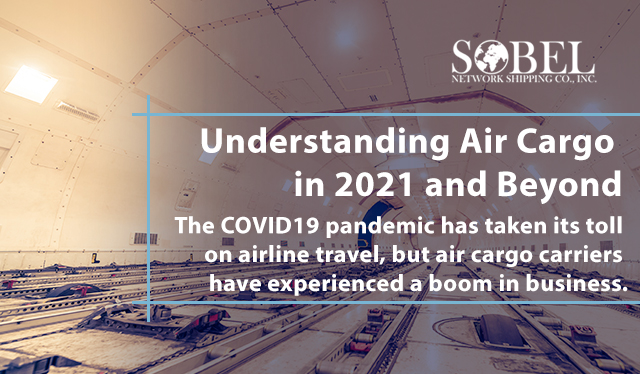The COVID19 pandemic has taken its toll on airline travel, but air cargo carriers have experienced a boom in business. Without a doubt, the demand for products such as PPE supplies has grown globally, and e-commerce has flourished due to remote working, stay-at-home orders, and lockdowns which forced the demand for supplies to a record high.
The Increase in Air Cargo Needs
The International Air Transport Association (IATA) studies have shown that air cargo tonne kilometers flown increased more than 4.4 percent from the record of the pre-pandemic number in March 2019. The numbers have only increased further. In April, reports showed a 78 percent increase in one year. With such impressive numbers, air cargo revenue has also increased substantially, hitting a near-record high of $117.7 billion while the air passenger service plunged by $84 billion.
Revenue Growth of Air Cargo Carriers
One of the biggest air cargo carriers, Lufthansa Cargo, experienced an impressive amount of revenue growth with an increase of 11 percent which comes to about $3.37 billion in adjusted earnings. The previous year, they earned only $1.22 million. The passenger side of the company experienced a 61.95 percent decline. Unfortunately, the decline in passenger cargo capacity declined because passenger planes once carried 60 percent of the global freight.
The Escalating Demand for Cargo Space
The increased demand for additional cargo space caused rate increases and additional constraints. At this point, shippers will not see a cost relief from the increased rates until the supply and demand start to level out.
The Continued Low Capacity
Many had theorized that airline travel would normalize over the summer but that has not happened so international air cargo continues to feel the strain. Capacity remains down.
Increasing Capacity with Preighters
To increase capacity, carriers are focused on using dedicated freighters and are also retrofitting the underbellies of passenger aircraft to haul cargo. The new retrofitted planes are referred to as ‘preighters’. The Emirates SkyCargo was one of the first carriers to introduce cargo-only fights using passenger aircraft. They place cargo onto the seats of the passenger plans and in the overhead bins.
Preighter Plans
The plane of choice has been the B777-300ER passenger aircraft for transporting essential goods. They also removed seats in the 10 B777-300ER to create mini freighters. The preighters have not caused any sort of rate in decreases and demand higher cargo rates because the margins are slim.
The Future of Cargo Capacity and the Industry
Currently, capacity remains in short supply. As more people become vaccinated, there will be an increase in the need for passenger planes which may add much-needed cargo capacity.
Many lessons have been learned from the COVID19 pandemic such as the necessity of quick responses. Many carriers are not adopting digitization for improved forward tracking coupled with artificial intelligence, cloud computing, big data, blockchain, analytics, and application programming interface (API).
Competition is also increasing with Amazon Air adding aircraft and gateways. Also, ocean carriers are emerging. CMA CGM added an air cargo division and is now extended its reach into Beirut, Istanbul, and Dubai.
Boeing has also experienced an upswing by delivering 46 new freighters in the last year to meet the demand. They project their production will increase by 60 percent in the next 20 years. Half will replace aging planes and the other half meet the needs of the projected traffic growth.


